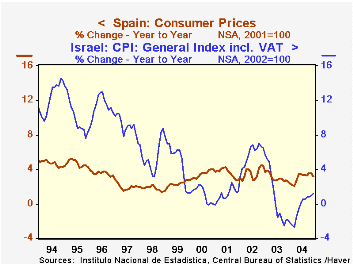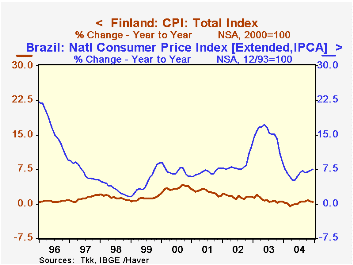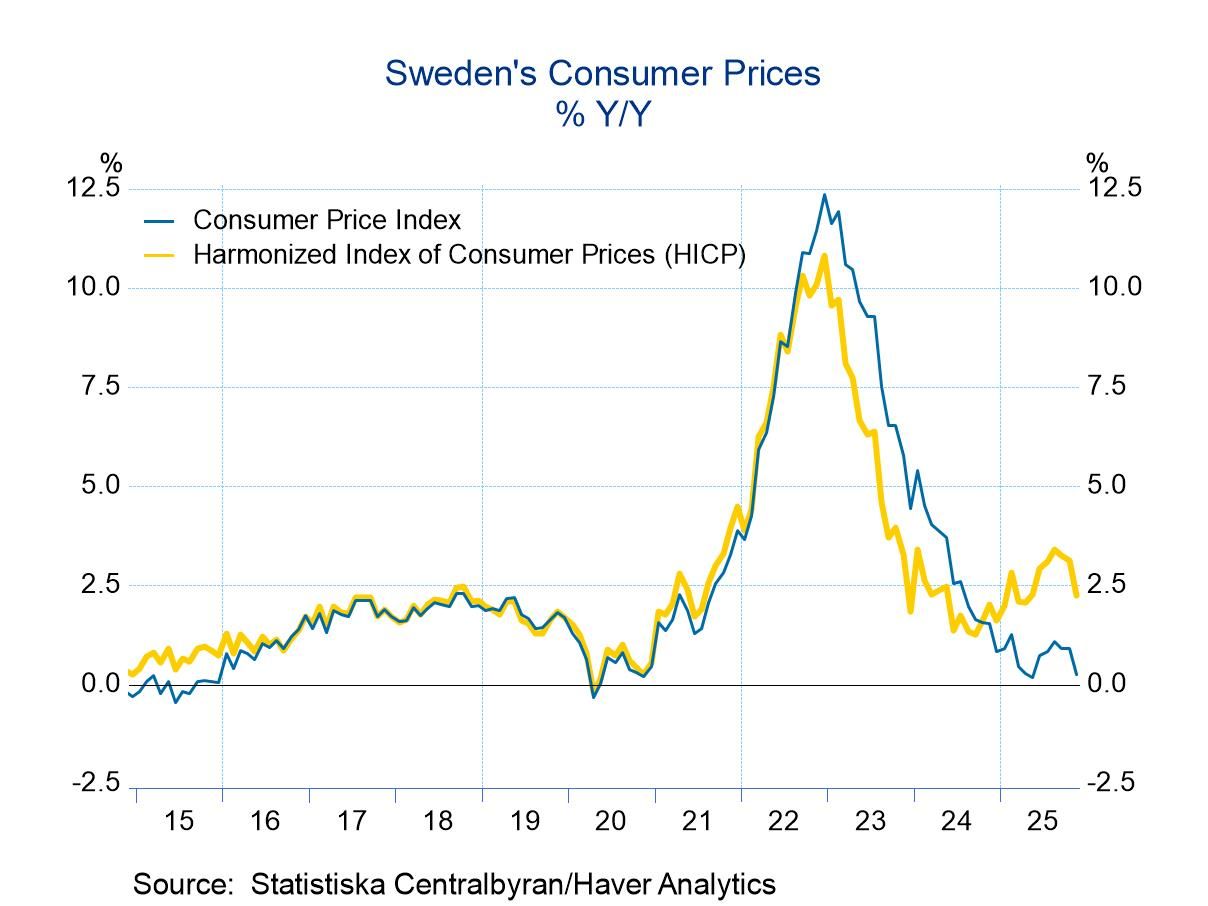 Global| Jan 14 2005
Global| Jan 14 2005Moderate 2004 Inflation in Several Countries, Despite Stronger Energy Costs
Summary
Back in the 1970s, when the first energy crisis occurred, the striking phenomenon for many economists was that inflation responded around the world. Many countries saw price indexes accelerate dramatically. Moreover, labor contracts [...]

Back in the 1970s, when the first energy crisis occurred, the striking phenomenon for many economists was that inflation responded around the world. Many countries saw price indexes accelerate dramatically. Moreover, labor contracts in many places included automatic accelerator clauses tied to inflation. The CPI in some countries -- including the US -- included mortgage rates as part of the measure of housing costs, so that, ironically, as central banks raised interest rates to combat inflation, the reported inflation figures rose. These factors, plus the widespread pricing-power of producers to pass energy costs on to their customers rather than absorb them, made the energy cost-price inflation process self-reinforcing.
Today, these conditions are vastly different, and it may be just as remarkable that resistance of generalized consumer price inflation to rising energy costs is as widespread now as the vulnerability to them was 30 years ago. December CPI reports for five quite different countries give examples. There's evidence of some pick-up in 2004 compared with 2003 performance, but these seem restrained. In Spain, the December 2004 CPI is up 3.2% from a year ago, 0.6 percentage point faster than 2003's rise. But inflation is less than in 2002 and not much more than in 2001. Excluding unprocessed food and energy products, Spain's core CPI is notably slower than either 2002 or 2001.
Finland has seen a progressive slowing of its CPI throughout this period, as has Brazil. Inflation conditions are vastly different in these two countries, of course. And the Brazilian central bank came under fire in markets and the press this morning for missing its annual inflation target once again. Even so, inflation in both of these countries is being kept at bay. In Slovakia, the CPI trend is uneven, but after it surged in 2003, it moderated in 2004, indicating that self-reinforcement mechanisms are not in play there either. In Israel, the 2004 CPI rise contrasts with 2003's outright decline, but shifts in regulated prices, not in energy, were the main ingredient in that seesaw pattern.
In fact, the only country in our table which is showing a persistent pick-up in inflation rates is the United States, which we included here for reference and perspective. Lower energy costs for December may help restrain the 2004 outcome (due to be published Wednesday, January 19) but the year still looks to show just about the highest inflation in four years.
| Consumer Price Indexes, NSA, Yr/Yr % Chg | Dec 2004 | Nov 2004 | Oct 2004 | Dec 2003 | Dec 2002 | Dec 2001 |
|---|---|---|---|---|---|---|
| Spain | 3.2 | 3.5 | 3.5 | 2.6 | 4.5 | 2.7 |
| ex Food & Energy | 3.0 | 2.9 | 2.9 | 2.5 | 4.1 | 3.8 |
| Finland | 0.4 | 0.5 | 0.9 | 0.6 | 1.7 | 1.8 |
| Slovakia | 6.0 | 6.3 | 6.6 | 9.2 | 3.4 | 6.4 |
| Israel | 1.2 | 0.9 | 0.8 | -1.9 | 6.5 | 1.4 |
| Brazil | 7.6 | 7.2 | 6.9 | 9.3 | 12.5 | 7.7 |
| Memo: US | NA | 3.5 | 3.2 | 1.9 | 2.4 | 1.6 |
Carol Stone, CBE
AuthorMore in Author Profile »Carol Stone, CBE came to Haver Analytics in 2003 following more than 35 years as a financial market economist at major Wall Street financial institutions, most especially Merrill Lynch and Nomura Securities. She had broad experience in analysis and forecasting of flow-of-funds accounts, the federal budget and Federal Reserve operations. At Nomura Securities, among other duties, she developed various indicator forecasting tools and edited a daily global publication produced in London and New York for readers in Tokyo. At Haver Analytics, Carol was a member of the Research Department, aiding database managers with research and documentation efforts, as well as posting commentary on select economic reports. In addition, she conducted Ways-of-the-World, a blog on economic issues for an Episcopal-Church-affiliated website, The Geranium Farm. During her career, Carol served as an officer of the Money Marketeers and the Downtown Economists Club. She had a PhD from NYU's Stern School of Business. She lived in Brooklyn, New York, and had a weekend home on Long Island.





